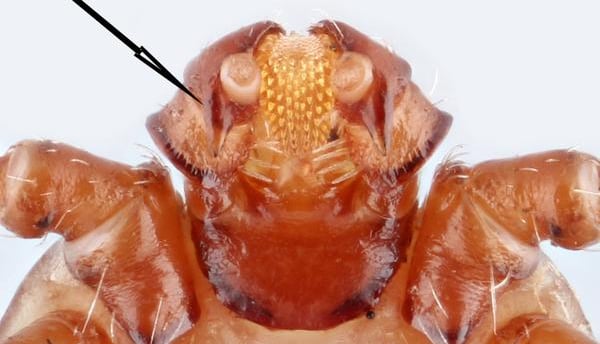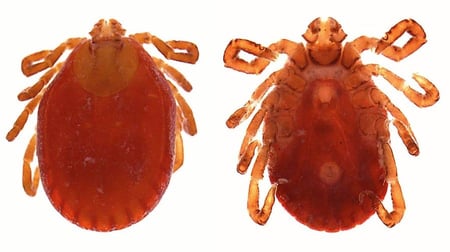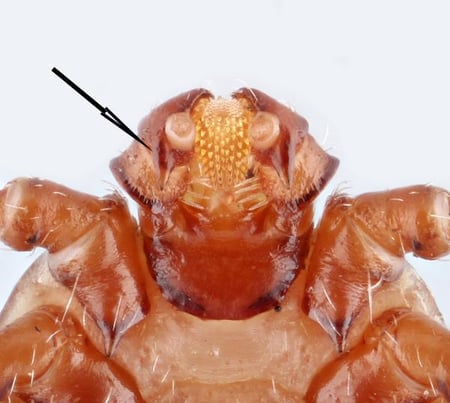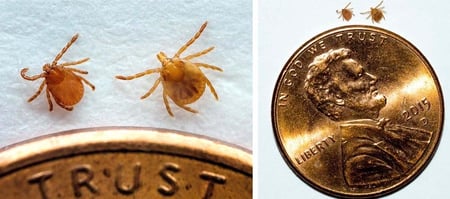There's a new tick in town — and this one doesn’t need a boyfriend
The Asian longhorned tick has officially arrived in Pennsylvania — and it's not your average backyard pest. In this post, I break down what this invasive tick looks like, how it spreads (spoiler: it doesn't need a mate), and what diseases it's known to carry.
GREAT PYRENEES GUIDEPERSONAL STORIESDOG LIFENEPA
Keith Kalm
5/31/20254 min read


If you’ve ever pulled a tick off your dog (or yourself), you already know the special kind of ugh that comes with those tiny bloodsuckers. But guess what? There's a new tick in town — and this one doesn’t need a boyfriend to ruin your summer.
Let me introduce you to the Asian longhorned tick (Haemaphysalis longicornis). This little pest has quietly made its way across Pennsylvania and a bunch of other states, and it's not just hitchhiking for fun — it's multiplying. Fast.
As someone who’s battled Lyme disease, Bartonella, and the whole tick-borne nightmare trifecta, I felt a pit in my stomach when I started reading up on this one. So I’m sharing what I learned — in plain language — because we all deserve to stay informed (and hopefully itch-free).
So What Is the Asian Longhorned Tick?
Think of it like the overachiever of the tick world. It’s originally from East Asia and showed up in the U.S. around 2017. Since then, it’s been spotted in over 19 states, including right here in PA. What makes it so unique? It can clone itself.
Yep — no mate, no problem. One female can lay up to 2,000 eggs all by her lonesome. That means a single tick can kick off a full-blown infestation. If that’s not nightmare fuel, I don’t know what is.
What Does It Look Like?
Images courtesy of:
Penn State Extension Asian Longhorned Tick, Haemaphysalis longicornis
NC State Extension – Asian Longhorned Tick
Licensed under Creative Commons Attribution 4.0 International (CC BY 4.0), unless otherwise noted.
It's small — really small. The nymph stage is about the size of a poppy seed, and even as an adult it’s usually under 3 mm (think sesame seed). It’s reddish-brown, with no distinctive markings like the white spot on lone star ticks or the black scutum (shield) you see on deer ticks.
So basically, it’s sneaky and hard to ID unless you’re looking closely — or have a microscope lying around.
How Is It Spreading So Fast?
This tick is incredibly adaptable. It thrives in humid, grassy areas (so, uh, basically every backyard in PA), and it latches onto a wide variety of animals: deer, raccoons, livestock, pets, humans — if it has blood, it's fair game.
Plus, because it doesn’t need to mate, one single female can establish an entire population. Combine that with rising temperatures and increased deer movement, and you've got a recipe for rapid spread.
Researchers from places like the CDC, USDA, and Penn State are keeping an eye on it, but even they’re impressed (read: horrified) by how fast it's moving.
Life Cycle & Behavior
The Asian longhorned tick follows a three-host life cycle:
Larvae emerge in late summer
Nymphs are active in spring
Adults peak in mid-summer
Each stage requires a different host to feed on, which increases the chances of disease transmission. They’re most active from March through October in Pennsylvania.
This tick loves humid environments and thrives in grassy areas, wooded edges, and farms. It’s been found on everything from deer and dogs to birds, raccoons, and humans.
What Diseases Can It Carry?
So far in the U.S., no human cases have been confirmed — but that doesn’t mean it’s harmless. In other parts of the world, the Asian longhorned tick has been linked to:
SFTS (Severe Fever with Thrombocytopenia Syndrome) – a serious viral illness found in Asia with a high fatality rate.
Theileria orientalis – which can be devastating to cattle.
Rickettsia, Anaplasma, Babesia, and Ehrlichia – all bacteria and parasites that can make humans and animals very sick.
In lab studies, it’s been shown to transmit Heartland virus, a rare but dangerous disease in the U.S.
Basically, it’s not yet known as a Lyme spreader, but it’s carrying a suspicious resume — and it’s only a matter of time before it picks up something new.
Why This Matters (Especially If You’ve Been Sick Before)
For those of us who’ve dealt with Lyme disease or any of its evil cousins, a new tick species isn’t just "interesting" — it’s triggering. When your body’s already fought through long-term illness, co-infections, and the gaslighting that comes with chronic tick-borne disease, any new threat feels personal.
This tick might not yet be passing around Lyme in the U.S., but it’s carrying enough potential that we’d be foolish to ignore it.
How to Protect Yourself (and Your Furry Friends)
Tick checks every time you come inside — you, your kids, your pets.
Bug spray with DEET or picaridin — or permethrin-treated clothing for longer protection.
Mow your lawn and keep tall grass away from sitting areas and paths.
Create a tick barrier with gravel or mulch between your lawn and the woods.
Inspect your animals regularly — especially if you’ve got outdoor pets or livestock.
If you find a tick you can’t identify, save it in a baggie and contact your local extension office or tick ID program.
In Pennsylvania, you can send ticks to:
They’ll confirm the species and test for known pathogens.
Wrapping It Up
The Asian longhorned tick isn’t something to panic about, but it is something to take seriously. It’s small, it’s sneaky, and it’s spreading — and it could bring new diseases with it as it settles in.
If you’ve walked the healing path from Lyme like I have, this kind of info is part of your toolkit. The more we know, the more we can protect ourselves and our communities.
Stay alert, check often, and maybe start carrying a lint roller with your hiking boots. (Pro tip: they actually help pull ticks off your clothes before they settle in.)
See you out on the trails — just not in the tall grass.
— Keith
Recovering tick magnet










